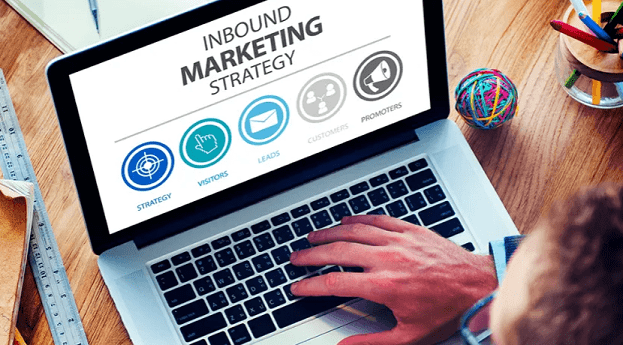Despite the growth of online marketing and digital sales tactics, more brands are struggling to connect with their customers and target audiences. To reunite with them, they need to do these things.
With the world becoming more hyperconnected following the mainstream adoption of the online ecosystem, more brands are struggling than ever before to connect with their customers. Changing economic conditions, a shifting consumer perspective and evolving technology have driven a wedge between brands and their target audience.
The multi-facet and blossoming digital landscape has allowed businesses and brands to have a plethora of information and consumer data at their disposal, allowing them to create more personalized online experiences and cater to a digitally-centric marketplace.
However, at the same time these technologies have brought more attention to the importance of customer preference, the same systems have simultaneously created a disconnect among brands and consumers.
The path to disconnection
The strategies that once helped marketers reach their audience are no longer working as effectively as they once did. Nearly 30% of marketers experience average-to-no returns on their online and digital marketing investments.
Even with seemingly limitless access to consumer information, different research shows that 68.6% of businesses have little understanding of how their customers think and how to cater to these evolving needs.
Although technology is at the crux of the disconnection crisis, other leading factors, including hybrid and remote working models, have also led to greater feelings of less engagement among teams and customers.
In a 2022 State of Remote Work Report, nearly 52% of employees that started working remotely due to the pandemic are feeling less connected with their coworkers. Efforts to get employees back into the office during recent years have been met with hostility, as the majority of workers now favor increased autonomy and flexibility in their day-to-day work lives.
The disconnection between brands and customers, as well as brands and technology, have fueled stagnant growth for online representation — shrinking the bottom line performance of businesses.
While multiple other challenges can present themselves to business owners and entrepreneurs, reconnecting with customers in a digitally-centered world has posed far greater problems than many would have imagined.
Reuniting the brand and the consumer
Managing several customer retention strategies over different platforms requires not only the know-how on how to manage all of these systems but also requires a large team of clued-up professionals that know how to efficiently execute these strategies without fail.
While this doesn’t seem impossible, seemingly out of reach for smaller business ventures and startups, leveraging key strategies that ensure ongoing brand development and message delivery can become an effective tool through which marketers can narrow the divide between brands and customers.
Meet customers where they are
An effective growth strategy starts by building awareness of where customers are and refocusing on the overall customer connection through these channels.
Often brands look at customers through the viewpoint of management, hoping to deliver a marketing message from every angle possible. Unfortunately, these strategies create a further breach between the two, making it harder for brands to see growing message engagement.
Overwhelming consumers with targeted ads, emails, blog posts and online content has led to an increase in digital fatigue. Start by focusing on a growth strategy that looks to enrich the customer’s online journey, and use these channels to foster more purposeful connections.
Have a data-driven approach
Paradoxically, data can be a key ingredient in the marketing growth strategy that can help bring the brand back into the peripheral view of the client.
Using data ensures that businesses have a clear understanding of where to find their target audience, and how to effectively deliver their branding message. Consider where customers often start their online journey, track their online activity, and what their preferences are in terms of social media platforms and other digital channels.
A report by BrightEdge Research found that 68% of online interaction starts through search engines. Using these metrics in combination with customer activity already starts creating a clear picture of how data can create a more proactive marketing approach, without having to overwhelm audiences.
Evolve beyond CRM technologies
Instead of managing customers through outdated CRM technologies, try to instead focus on how to structure a platform that can offer marketers better flexibility and scalability. Building a central, yet consistent customer experience requires businesses to migrate their data away from siloed databases.
Evolving beyond the familiar does however require substantial financial input, especially in the case of utilizing shared cloud-based data platforms.
Building more fluid connections between marketing techniques, sales and customer feedback ensures that brands can deliver high-quality messaging, but at the same time improve their overall customer engagement.
More consumers than ever before value things such as speed, convenience, knowledgeable help and on-demand customer service following a report that found 80% of American consumers now consider these important elements as part of a positive customer experience journey.
Adopting ways to break down different silos within the business, and integrating these efforts onto one advanced platform gives businesses the technological edge above their competitors.
Improve purchasing channels
Now more than ever, it’s important for brands to step up to the plate and create purchasing channels that cater to their target audience and help improve the overall online experience by improving backend sales systems such as fast, safe and reliable checkout features on ecommerce platforms.
Not only do online stores need to be more customer-oriented in terms of finalizing purchases and minimizing the possibility of cart abandonment, but there should be substantial efforts directed toward creating mobile-friendly experiences.
A growing number of internet users have reported using shopping applications on smartphones and/or tablets, with research showing that 69.4% of online consumers now prefer these methods as opposed to ordinary websites.
Taking the time to properly integrate these features into the digital marketing strategy might seem a bit far off during the early stages of business development. Yet, these are the consumer trends that are reshaping the way brands can connect with their audiences and further grow their digital impression.
Now is the time to stay connected
Building a marketing growth strategy that ensures the effective delivery of brand messages requires businesses to be more agile and adaptable in a fast-changing digital ecosystem.
With consumers constantly evolving and trends rapidly changing, being united with loyal customers means that brands need to have a better understanding of where to find their customers online, but also how to construct an online experience without overwhelming them at the same time.
Finding a balance means that businesses and marketing teams need to be more open to trying new methods, but at the same time, develop strategies that are unique to their clientele, brand and online presence.
By Pierre Raymond
Entrepreneur Leadership Network Contributor, Founder of OTOS. Pierre Raymond is a bilingual project consultant/business analyst with over 20 years of experience in financial services and data management IT solutions.

















